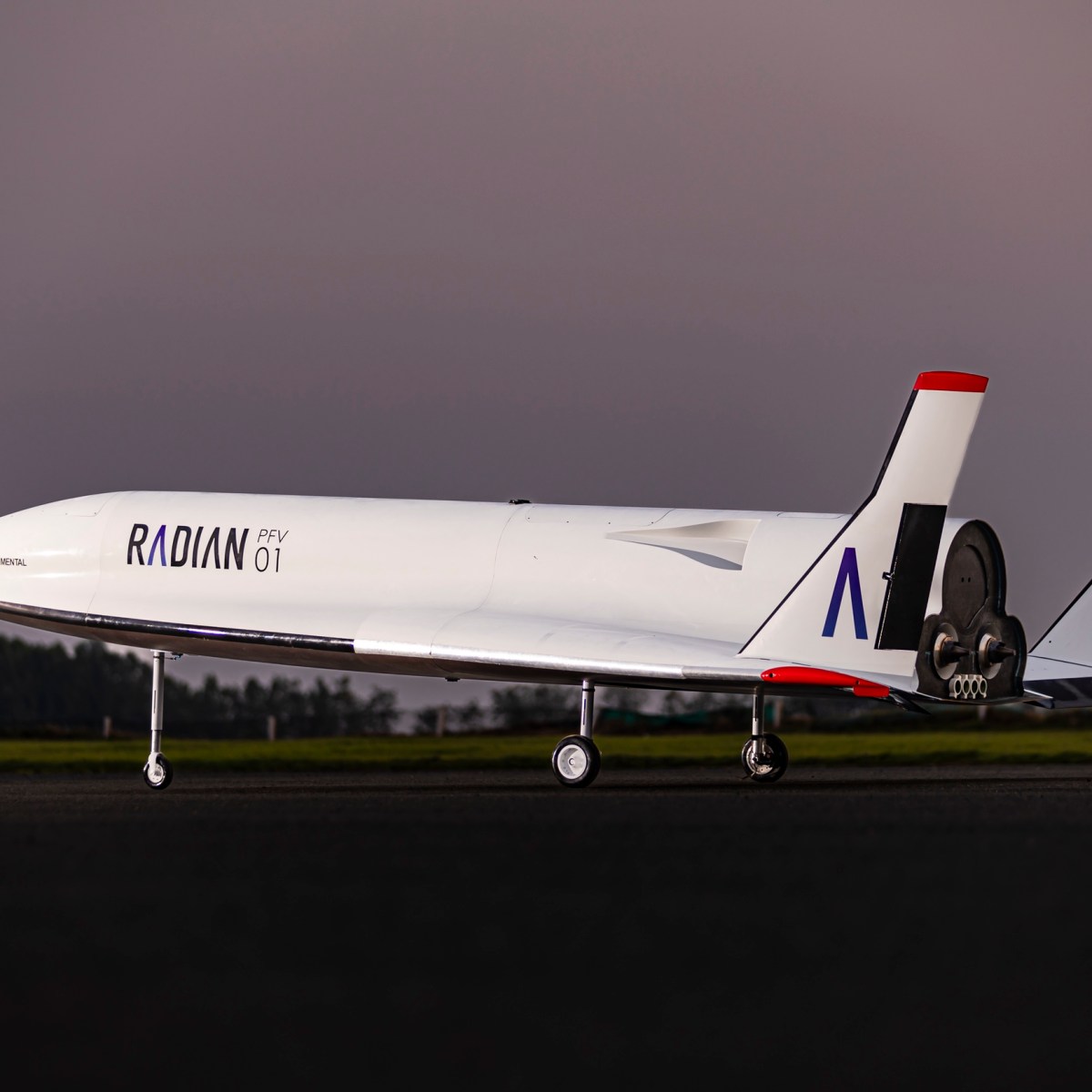The Seattle-based company announced Sept. 25 that it performed an initial series of taxi tests of a prototype flight vehicle it calls PFV01 at an unidentified airport in Abu Dhabi in the United Arab Emirates. The tests included what it called “short hops” by the vehicle as it tested its handling characteristics for takeoff and landing.
PFV01 is designed to test the aerodynamics of the company’s proposed Radian One, a spaceplane that would take off horizontally using a rail sled system more than three kilometers long and reach orbit using rocket engines before returning to a runway landing. The vehicle, as currently designed, could carry up to five people and 2,270 kilograms of cargo to low Earth orbit and return with up to 4,540 kilograms of cargo.
Radian has already done extensive computer modeling and wind tunnel testing of the design, said Livingston Holder, chief technology officer and co-founder, in an interview. “But, we wanted to get a system in the air to see if the analytical work done to date matches our predictions.”
The runway tests, he said, confirmed those models. “It’s an important step,” he said, “validating that the analytical models that we’re using match what we’re seeing in real life.”



Haven’t heard much about this before, and it’s still in the very early stages, but it seems cool.